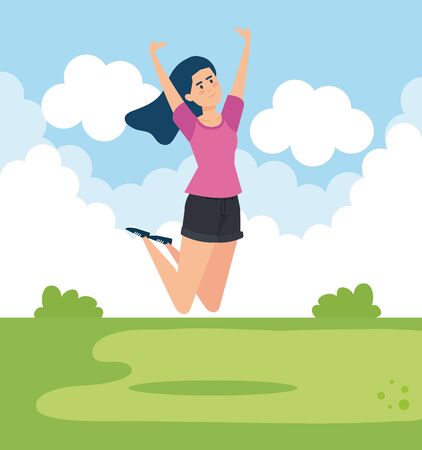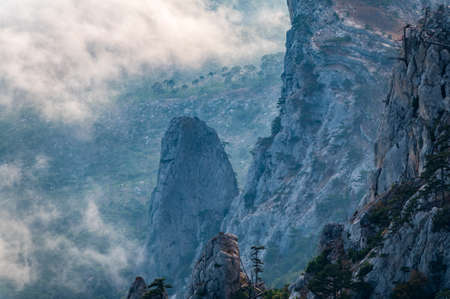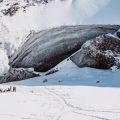1. Setting the Scene: The Evolution of American Hiking
Imagine the U.S. wilderness at sunrise, mist curling over endless ridgelines and ancient pines. Hiking has long been a way Americans connect with nature, but it wasn’t always as welcoming or inclusive as it is today. Let’s take a visual journey through the shifting landscapes, attitudes, and early days of hiking in the United States—especially from the perspective of women who dared to step beyond the boundaries set before them.
The Early Days: Who Belonged on the Trail?
In the late 1800s and early 1900s, hiking in America was mostly seen as a pursuit for men—particularly white men. Outdoor clubs and trail societies often excluded women, either outright or by design. Women who hiked were considered outliers, facing not just rugged terrain but also cultural skepticism. Trailhead signs, guidebooks, and advertisements reflected these norms, rarely showing women exploring wild spaces on their own terms.
Changing Trail Signs and Shifting Attitudes
As decades passed, the visual language of hiking began to change. Trail signs that once depicted only male hikers slowly started to feature women—sometimes as companions, eventually as leaders. Posters and brochures evolved to show women navigating switchbacks, hoisting backpacks, and standing atop summits in awe.
| Era | Trail Imagery | Cultural Attitude Toward Women Hikers |
|---|---|---|
| Early 1900s | Men with walking sticks; formal attire | Women discouraged; seen as too delicate for hiking |
| 1940s-60s | Couples or families; women as supportive roles | Some acceptance if accompanied by men |
| 1970s-80s | Women in outdoor gear; solo or in groups | Growing empowerment; trailblazers start gaining recognition |
| Today | Diverse women leading hikes; inclusive signage | Broad encouragement for all genders and backgrounds |
A New Generation at the Trailhead
The changing face of hiking culture didn’t happen overnight. It took generations of bold women challenging stereotypes and literally breaking new trails. From mountain passes in the Rockies to forest paths in Appalachia, they transformed not only how we hike but who gets to claim space on America’s wildest trails. Their stories—and the evolution of those welcoming trailhead signs—continue to inspire new generations to step outside, push past boundaries, and see themselves reflected in every summit sunrise.
Trailblazers: Pioneering Women Who Led the Way
Icons of the American Trails
When we think about the wild beauty of America’s long-distance trails—like the Appalachian Trail or Pacific Crest Trail—it’s easy to picture rugged landscapes, endless skies, and miles of untamed wilderness. But running through those ridgelines are stories of women who stepped beyond expectations and changed hiking culture forever. These trailblazers didn’t just walk in nature—they left footprints that rewrote history.
Meet the Pioneers
| Name | Trail/Region | Claim to Fame |
|---|---|---|
| Emma “Grandma” Gatewood | Appalachian Trail | First solo female thru-hiker of the AT (1955), at age 67; inspired generations with her grit and homemade gear |
| Anish (Heather Anderson) | Pacific Crest Trail, Appalachian Trail, Continental Divide Trail | Set speed records on all three Triple Crown trails; redefined what endurance and perseverance look like on America’s longest paths |
| Alice Manicur | National Parks & Appalachian Region | Pioneered outdoor education for women; key figure in opening up park programs to female hikers and students in the mid-20th century |
| Jennifer Pharr Davis | Appalachian Trail | Broke the overall speed record for completing the AT in 2011, showing women could lead in ultra-distance hiking challenges |
| Mildred Norman Ryder (“Peace Pilgrim”) | Across the U.S. | Walked over 25,000 miles across America promoting peace; became a symbol of walking as a way to connect with nature and purpose |
Their Impact Beyond the Trailhead
These women didn’t just hike—they broke barriers. Grandma Gatewood showed that age and gender are no limits to adventure, walking in canvas sneakers and sleeping under the stars. Anish pushed speed and stamina to new heights, while Jennifer Pharr Davis proved that determination could shatter records. Alice Manicur opened doors for future generations by making outdoor spaces more inclusive. Peace Pilgrim reminded everyone that a hike can be a journey of meaning, not just miles.
Cultural Shifts in Hiking Gear and Attitudes
Their stories sparked changes in everything from hiking gear (think lighter packs and better shoes) to how Americans view women on the trail. Today, thanks to these pioneers, trail culture celebrates diversity and empowerment, welcoming hikers from every background.

3. Challenging Stereotypes: Breaking Social and Cultural Boundaries
For generations, hiking in the U.S. was seen as a man’s game—a rugged sport reserved for bearded explorers and outdoor “tough guys.” But women have always found ways to carve out space on the trail, even when the world told them they didn’t belong. Let’s zoom in on how fearless women hikers rewrote the rules, one switchback at a time.
Snapshots of Breaking Barriers
Every step taken by pioneering women hikers pushed past outdated expectations. They didn’t just face rocky trails; they had to overcome society’s rocky attitudes about what women could or should do. Here are some real-life snapshots:
Trailblazer |
The Challenge |
The Breakthrough |
|---|---|---|
Emma “Grandma” Gatewood |
Told she was too old and frail for the Appalachian Trail at 67 | Became the first woman to solo hike the entire AT (and did it in sneakers!) |
Junko Tabei |
Faced skepticism as a Japanese woman leading climbs in the U.S. | Broke boundaries by summiting peaks worldwide, inspiring American climbers |
African American Women Outdoors Leaders |
Lack of representation and cultural barriers in hiking communities | Formed hiking groups like Outdoor Afro, opening doors for diverse hikers |
LGBTQ+ Women Hikers |
Encountered discrimination and exclusion on popular trails | Created inclusive communities like Wild Diversity and Diversify Outdoors |
Pushing Past Gender Norms—On and Off the Trail
Women hikers didn’t just pack their bags—they packed away stereotypes. They wore boots instead of heels, carried backpacks instead of purses, and sometimes faced criticism for choosing adventure over traditional roles. On famous long-distance routes like the Pacific Crest Trail or Colorado’s Fourteeners, women began showing up in greater numbers, proving that grit has no gender.
Navigating Society’s Backcountry
The wild wasn’t always welcoming. Many early women hikers had to fight for their right to be taken seriously—by gear companies, park rangers, even their own families. Some wrote guidebooks after being ignored by male authors. Others started clubs where women could share advice and support, like the historic “Ladies’ Alpine Club” or today’s “GirlTrek.” Their journeys through forests and over ridges mirrored journeys through social obstacles, each summit a small victory against a culture slow to change.
4. Forging Community: The Rise of Women’s Hiking Groups
Across the United States, women are breaking boundaries not just on the trails, but in how they connect and build community. In decades past, hiking could feel isolating for women—especially women of color, LGBTQ+ hikers, or those new to outdoor adventures. But today, a wave of inclusive hiking clubs and online communities is changing that story. These groups offer more than just a walking buddy; they create real camaraderie, support, and a sense of belonging beneath America’s endless skies.
How Women’s Hiking Groups Changed the Scene
Before these groups gained momentum, many women felt like outsiders in the world of hiking. Now, whether it’s a sunrise trek through the Rockies or a beginner-friendly stroll along the Appalachian foothills, women can find their tribe. Social media platforms like Instagram and Facebook have made it easier than ever for people to share trail tips, organize meet-ups, and celebrate each other’s achievements.
What Makes These Groups Special?
| Feature | Description |
|---|---|
| Camaraderie | Women cheer each other on, share stories, and form friendships that last long after the hike ends. |
| Support | New hikers receive advice on gear, safety, and trail choices from experienced members. |
| Inclusivity | Diverse groups welcome hikers of all backgrounds, ages, and abilities. |
| Sense of Belonging | Every member feels seen and valued—no one hikes alone. |
Popular Women’s Hiking Communities in the U.S.
- Hike It Baby: Focused on moms and families who want to explore nature with young children.
- Women Who Hike: A national movement that hosts group hikes and offers resources for solo adventurers.
- Outdoor Afro: Centered on Black women and families reclaiming space in nature.
- Latina Outdoors: Celebrates Latina heritage while connecting members to trails across the country.
- Tough Girl Challenges: Encourages personal growth through adventure for women of all fitness levels.
The rise of these communities means more women feel empowered to lace up their boots, hit the trail, and write their own mountain stories. Together, theyre redefining what it means to belong in America’s wild places—one step at a time.
5. Redefining Gear and Outdoor Brands
Women’s Impact on Hiking Gear
For decades, hiking gear in the U.S. was designed with a one-size-fits-all mentality—usually meaning “made for men.” But as more women took to the trails, they began to push back against gear that didn’t fit their bodies or their needs. Women adventurers spoke up about uncomfortable backpacks, oversized jackets, and hiking boots that left blisters instead of memories. Their voices reached outdoor brands, urging them to rethink everything from sizing to style.
From the Trailhead to the Retail Shelf
Women didn’t just want a “pink version” of men’s gear. They demanded real representation and practical solutions. This movement led to collaborations between female hikers and major outdoor brands, resulting in products specifically crafted for women’s bodies and hiking experiences. Women also influenced marketing by pushing brands to feature real hikers—not just models—in ads and catalogs.
Key Changes Driven by Women in Outdoor Brands
| Old Approach | New Approach Led by Women |
|---|---|
| Unisex sizing (mostly mens fit) | Inclusive sizing for all body types |
| Lack of diversity in ads | Featuring women of all backgrounds and ages |
| Gear designed by men | Product development teams with women leaders |
| Bland colors, few style options | Variety in colors, patterns, and functional design choices |
The Rise of Women-Led Outdoor Brands
Some trailblazers took things even further by launching their own outdoor companies. Brands like Oiselle, Wild Rye, and Coalition Snow were founded by women who saw gaps in the market and wanted gear that reflected their love for adventure and community spirit. These businesses didn’t just sell products—they built supportive spaces where everyone felt welcome on the trail.
A New Ethos for Outdoor Adventure
The conversation shifted from simply selling products to building a culture of inclusion. Today, U.S. outdoor retailers host women’s hiking clinics, sponsor female-led expeditions, and create space for honest feedback from hikers themselves. Thanks to these efforts, outdoor adventure feels more accessible—and a lot more fun—for everyone.
6. Legacy and the Path Ahead
Modern Women Hikers Reflect on the Trailblazers
Today’s female hikers lace up their boots with gratitude for the bold women who came before them. Whether it’s following in the steps of Emma “Grandma” Gatewood, who conquered the Appalachian Trail in canvas sneakers, or finding inspiration from modern leaders like Jennifer Pharr Davis, today’s trail sisters know they’re part of a living legacy. Many say it’s not just about reaching mountain summits—it’s about seeing yourself reflected on the trail, and knowing you belong.
How Past Generations Paved the Way
| Trailblazer | Impact | Modern Reflection |
|---|---|---|
| Emma Gatewood | First solo woman to hike the Appalachian Trail (1955) | “Her courage showed me I could tackle any hike—no matter my age or gear.” – Jessica, 34, Colorado |
| Annie Smith Peck | Pioneered mountaineering for women in pants (early 1900s) | “She broke dress codes and gender rules. Now I wear what works and climb where I want.” – Linda, 41, Oregon |
| Jennifer Pharr Davis | Set speed records and promoted inclusivity in hiking (2011) | “She made ultra-long trails feel possible for all women, not just pros.” – Sasha, 28, North Carolina |
The Vibrant Future of Hiking Culture in America
The trails are more colorful than ever. Groups like Outdoor Afro, Latino Outdoors, Indigenous Women Hike, and GirlTrek are reshaping what hiking looks like across the U.S. Hikers now come together not only to chase peaks but also to build community and share stories. Gear companies are listening too—designing packs and boots for all body types, and offering support for first-timers and families.
What’s Changing on American Trails?
- Diversity: More women of color leading hikes and organizing outdoor groups.
- Youth Involvement: Schools and after-school programs introducing girls to nature early.
- Accessibility: Adaptive programs making trails friendly for hikers with disabilities.
- Mental Wellness: Growing awareness of hiking as self-care, stress relief, and empowerment.
- Sustainability: Stronger focus on Leave No Trace ethics and protecting wild places.
A Young Hiker’s Perspective
“I never thought hiking was for someone like me—now I see people who look like me out here all the time. The trail feels like home.” – Mia, 16, California
Paving New Paths Together
The story of women hikers in America is still being written. Every step forward is a tribute to those who dared to break boundaries—and an open invitation for everyone to join the journey.


